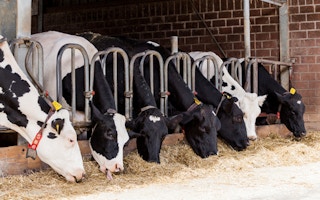A new and interactive tool released by FAO allows farmers, policy makers and scientists to calculate meat, milk and eggs production as well as greenhouse-gas emissions from livestock to make the sector more productive and more climate-friendly.
GLEAM-i, the Global Livestock Environmental Assessment Model interactive, provides answers to a wide range of questions. For example, as a small livestock keeper or a pastoralist, how can you get your animals to produce more milk, meat or eggs? If you’re a policy maker, what practices to reduce greenhouse gas emissions from livestock should you support?
Based on GLEAM, the model developed by FAO’s Animal Production and Health Division to support policy and practice change to achieve sustainable livestock development, GLEAM-i can be run by anyone using the Excel software, including community organisations working in remote rural areas. It includes variables such as countries and regions, the number and types of livestock - dairy or meat sheep, backyard or industrial pigs, grazing or mixed systems - feed materials, manure management as well as the specific conditions under which the animals are kept.
“The objective of GLEAM is to help reduce greenhouse gas emissions and ensure that livestock activities are as efficient as possible so that they can continue to contribute to people’s food, nutrition and livelihood needs while utilising fewer natural resources,” said Anne Mottet, Livestock Policy Officer at FAO.
Hundreds of millions of people around the planet depend on livestock for livelihoods, food security and nutrition. Livestock is particularly important for developing countries where demand for animal protein is growing and for remote and marginal areas, where limited alternatives exist. Yet, it is estimated that the sector is responsible for 14.5 per cent of all anthropogenic greenhouse gas emissions.
FAO research based on GLEAM has found that with feasible and affordable changes, livestock farmers can increase production and reduce emissions by nearly a third.
Precise information about the environmental footprint of livestock supply chains will help stakeholders to take better-informed decisions and reduce greenhouse gases emissions. “For example, governments can use GLEAM-i to prepare national inventories and to develop policies for improved efficiency in animal husbandry, feed and manure management,” Mottet said.
GLEAM currently supports a range of national and international projects, including climate smart agriculture initiatives in Ecuador, Niger, Zambia and Malawi. It also supports a program funded by the Climate and Clean Air Coalition initiative on improving productivity and reducing enteric methane emissions in South America, South East Asia and, East and West Africa.

















